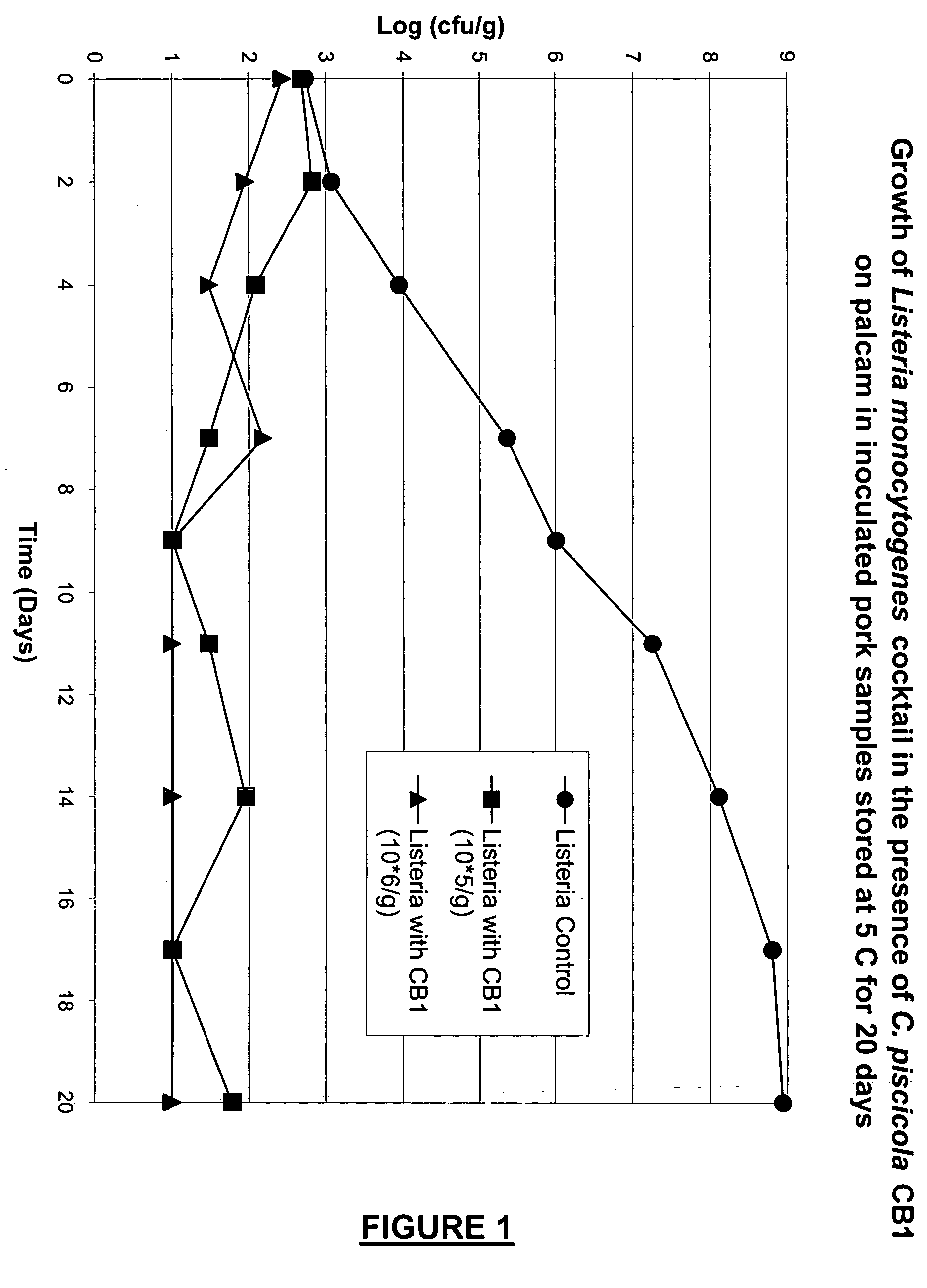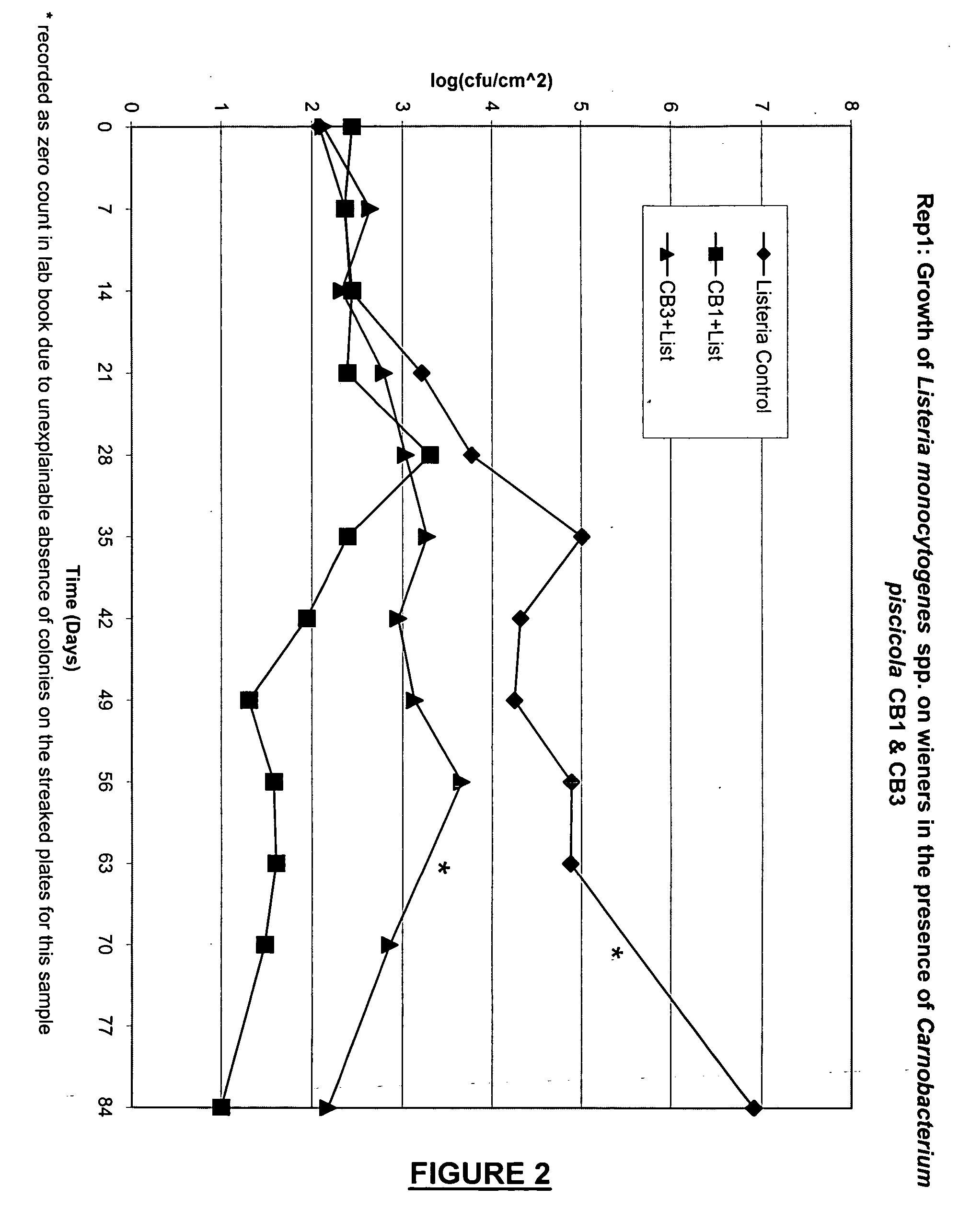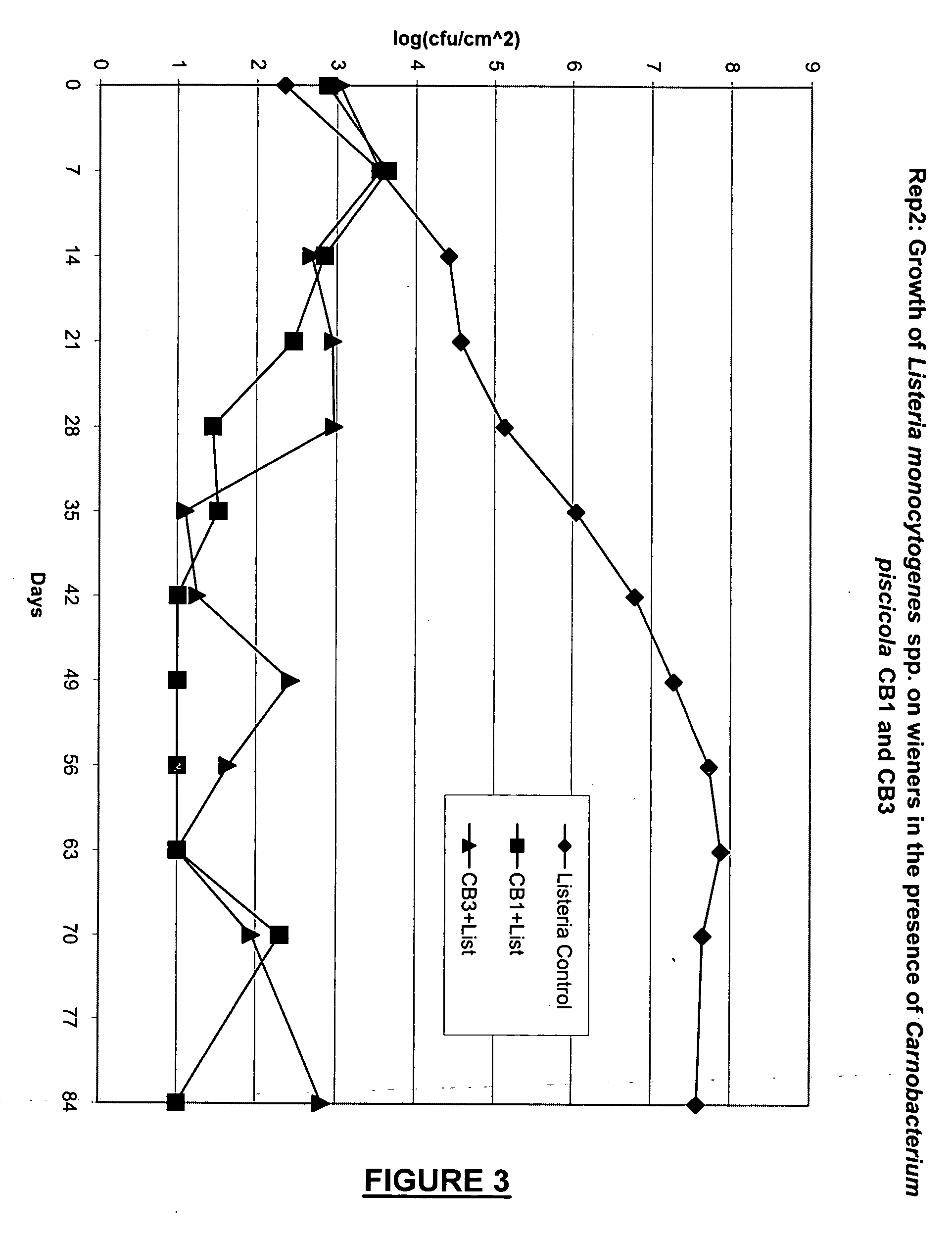Carnobacterium piscicola CB1, CB2, and CB3
a carnivorous bacteria and carnivorous bacteria technology, applied in the field of new strains of carnivorous bacteria, to achieve the effect of enhancing antibacterial activity, not causing significant spoilage of meat, and unprecedented anti-listerial activity
- Summary
- Abstract
- Description
- Claims
- Application Information
AI Technical Summary
Benefits of technology
Problems solved by technology
Method used
Image
Examples
Embodiment Construction
[0029] A composition of the present invention includes strains of Carnobacterium piscicola, and each producing at least one, and typically three, bacteriocins. C. piscicola CB1 produces bacteriocins piscicolin 126, carnobacteriocin BM1, and another uncharacterized bacteriocin that exhibits antibacterial activity. C. piscicola CB2 produces piscicolin 126, carnobacteriocin BM1, and may produce one or more additional uncharacterized bacteriocins. C. piscicola CB3 produces piscicolin 126, carnobacteriocin BM1, and may produce one or more additional uncharacterized bacteriocins.
[0030] The compositions and methods of the present invention include the use of one or more natural bacterial cultures, homologous pasteurized or unpasteurized fermentate, heterologous pasteurized or unpasteurized fermentate or combinations thereof. The natural bacterial cultures of the present invention are described above. A homologous fermentate refers to the culture supernatant of a single bacterial culture p...
PUM
| Property | Measurement | Unit |
|---|---|---|
| molecular weight | aaaaa | aaaaa |
| temperatures | aaaaa | aaaaa |
| resistance | aaaaa | aaaaa |
Abstract
Description
Claims
Application Information
 Login to View More
Login to View More - R&D
- Intellectual Property
- Life Sciences
- Materials
- Tech Scout
- Unparalleled Data Quality
- Higher Quality Content
- 60% Fewer Hallucinations
Browse by: Latest US Patents, China's latest patents, Technical Efficacy Thesaurus, Application Domain, Technology Topic, Popular Technical Reports.
© 2025 PatSnap. All rights reserved.Legal|Privacy policy|Modern Slavery Act Transparency Statement|Sitemap|About US| Contact US: help@patsnap.com



